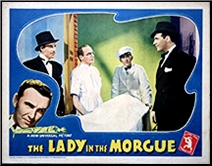Tue 10 Sep 2019
Mystery Review: LAWRENCE BLOCK – Tanner’s Tiger.
Posted by Steve under Bibliographies, Lists & Checklists , Characters , Reviews[4] Comments
LAWRENCE BLOCK – Tanner’s Tiger. Evan Tanner #5. Gold Medal D1940, paperback original; 1st printing, 1968. Reprinted in paperback by Jove (1985) and Harper (2007). Subterranean, hardcover reprint, 2001.
The gimmick in Lawrence Block’s Tanner stories is actually twofold: (1) that a piece of shrapnel in his brain during the Korean War has not allowed him to get a moment’s sleep ever since, and (2) he somehow is given assignments by someone in the CIA who he doesn’t know and who doesn’t know that Tanner doesn’t work for him. (If I have any details of either (1) or (2) wrong, you can easily let me know.)
In Tanner’s Tiger he’s handed the task of checking out the Cuban pavilion at the ’67 Montreal Expo; something wrong is going on there, but no one knows what. Refused entry at the border, however, Tanner and his young ward (semi-adopted daughter) Minna (putative queen of Lithuania) have to sneak across from Buffalo.
And to complete his assignment he must join up with several members of the local chapter of the MNQ (Le Mouvement national des Québécoises et Québécois), who besides coming to Tanner’s aid, are planning to assassinate Queen Elizabeth while she also attends the Expo. (Tanner is a champion of all sort of Lost Causes.)
Which is were the “tiger” of the tale comes in. Not only is Arlette a fervent member of the cause, but she also has a lusty outlook on both love and life. Throw in the mysterious disappearance of Minna while she and Tanner are visiting the Cuban pavilion, followed soon after by the discovery of a small fortune of smuggled heroin, and you have quite a multi-fold predicament for Tanner.
Which he decides to handle as only one problem at a time, and he does, but unfortunately only in a most perfunctory way. Getting Tanner into trouble turns out to be a lot more fun than getting him out of it. But of course with author Lawrence Block at the helm, the books is filled from top to bottom with enough witty observations and laugh-out-loud scenes of pure comedy to make this an entertaining romp from beginning to end.
For example, from page 105, a mysterious man has just swapped a small attaché case he had for a bag of belongings that Arlette and Tanner had been carrying:
“Yes?”
“This satchel.”
“Do you know what is in it?”
“No.”
“Neither do I. Why did he take our sandwiched?”
“Perhaps he was hungry.”
In the case that the man left them are several packages of white powder. Three kilos’ worth. You may or may not find this funny, but I did. This particular adventure for Evan Tanner may be too uneven to be the best of the series, but if you don’t take it all that seriously, I think you’ll enjoy it as much as I did.
The Evan Tanner series —
The Thief Who Couldn’t Sleep (1966)
The Canceled Czech (1966)
Tanner’s Twelve Swingers (1967)
The Scoreless Thai (a.k.a. Two for Tanner) (1968)
Tanner’s Tiger (1968)
Here Comes a Hero (1968) (a.k.a. Tanner’s Virgin)
Me Tanner, You Jane (1970)
Tanner on Ice (1998)

